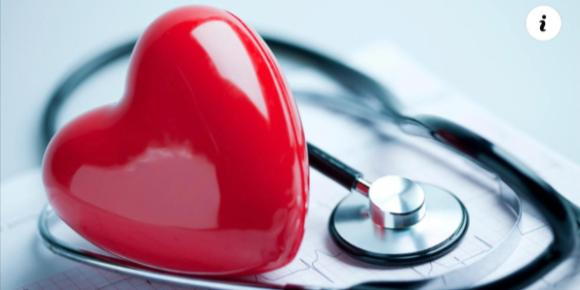
What your skin can tell you about heart disease.
- posted: Feb. 18, 2023
Heart disease is a general term that refers to problems of the heart, like coronary artery disease, the most common type in the U.S. Heart disease also includes arrhythmia, mitral valve prolapse, pulmonary stenosis, and heart attack.
While you may know to pay attention to symptoms like shortness of breath, rapid or irregular heartbeats, or discomfort in your arm, shoulder, and chest, you may be surprised to learn that your skin can give warnings about heart disease.
Here are some skin symptoms to note, particularly when there is more than one, that could indicate you're at risk of developing heart disease.
Venous dermatitis
Sometimes known as stasis dermatitis, this skin condition is a symptom of poor circulation caused by heart disease, varicose veins, high blood pressure, and a sedentary lifestyle. Poor blood flow can lead to fluid or even blood leaking into the surrounding skin, which adds pressure beneath the skin. Over time, the veins lose their strength and can become twisted and enlarged.
"Think of your veins as a highway," according to Gardens Dermatology. "If the road is straight and there are little to no blockages on the road, traffic flows quickly and efficiently. If the road is winding or full of traffic, things slow down and get backed up."
Early symptoms include itchy and dry skin, leg heaviness when standing or walking, and swelling that worsens throughout the day but clears up while you sleep, according to the American Academy of Dermatology.
Leg swelling
Unexplained swelling, also known as edema, in your legs and feet can be a sign of heart disease because "the veins are having trouble transporting enough blood all the way to the feet and back to the heart," according to Informed Health. When blood pools in lower blood vessels, it will force fluid out into the surrounding tissue, leading to swelling and tightness in your skin.
Dark-colored toes
Blue or purple toes may indicate lack of oxygen. This phenomenon is sometimes called blue toe syndrome and, according to research published by the European Society of Cardiology, it is commonly seen in older adults who have had an angiographic procedure or vascular surgery. It is a sign that blood vessels leading to those toes could be blocked. This is a serious problem that can lead to tissue and skin death if its underlying cause goes untreated.
Finger clubbing
Clubbing happens when the end of your finger appears to bulge and is warmer and redder than the rest of your hand. You nail beds may also soften. Symptoms can appear quickly but will also go away quickly when the underlying problem is treated.
Clubbing is a symptom of reduced oxygen in the blood, according to Mount Sinai. This may be caused by congenital heart defects, lung cancer, chronic lung infections, or an infection in the lining of the heart chambers and valves.
For more information about your skin concerns and how they can reveal what's going on with the rest of your body, visit gardensdermatology.com.

